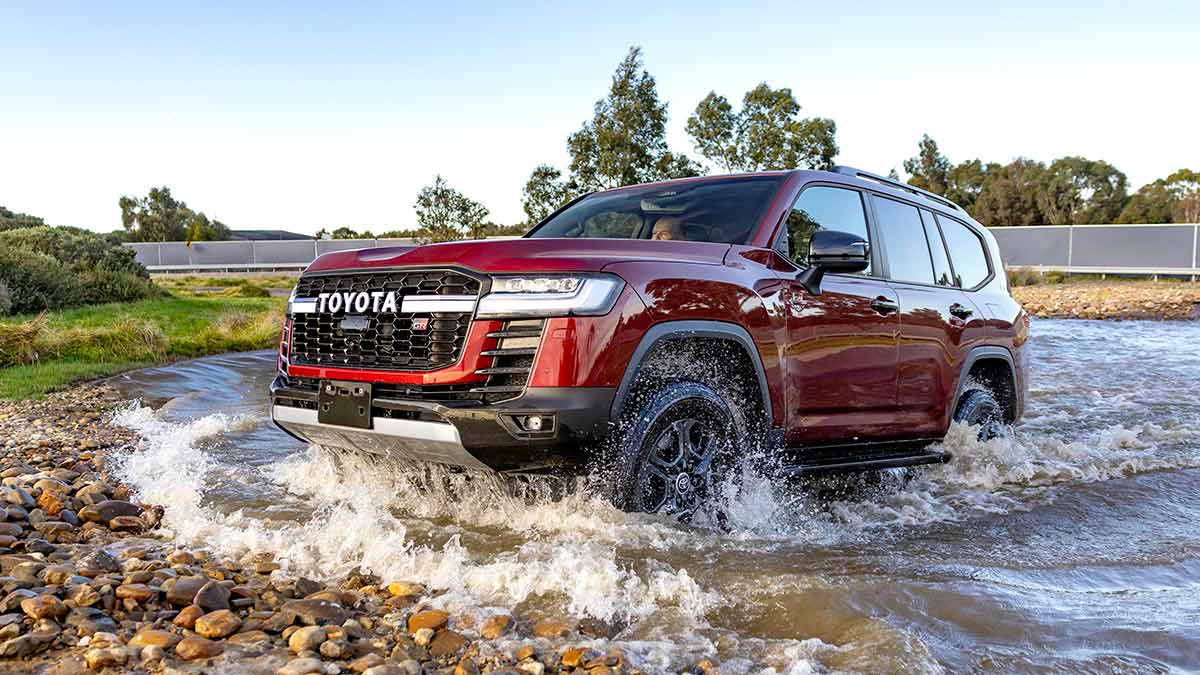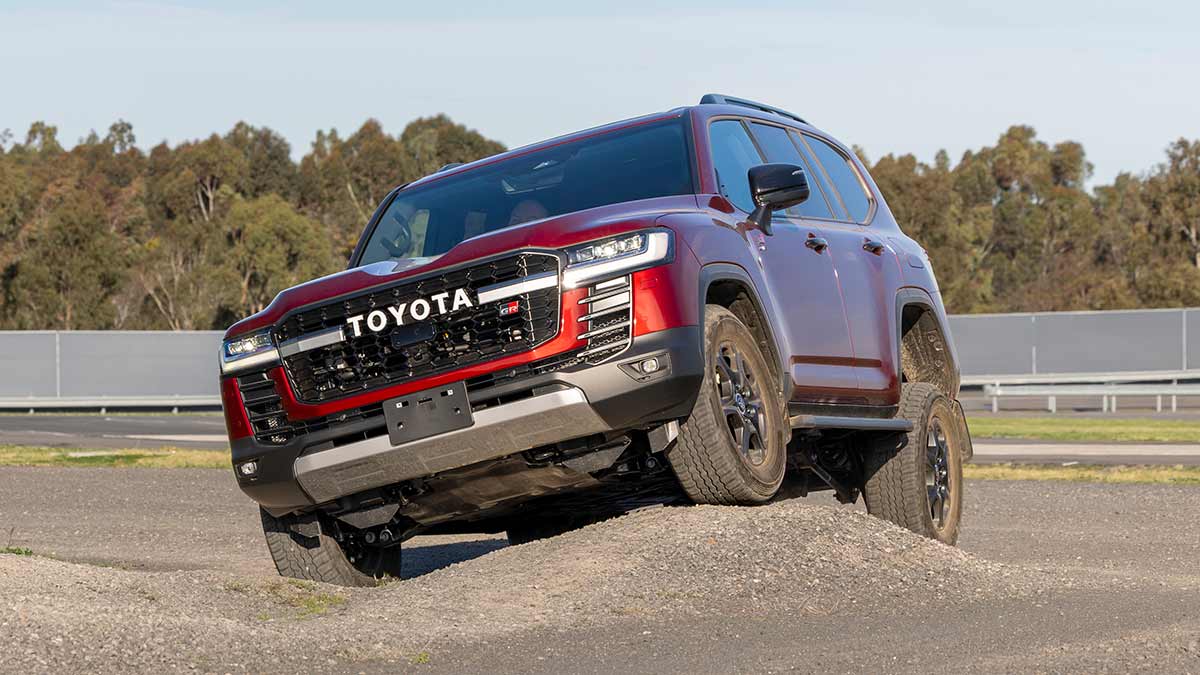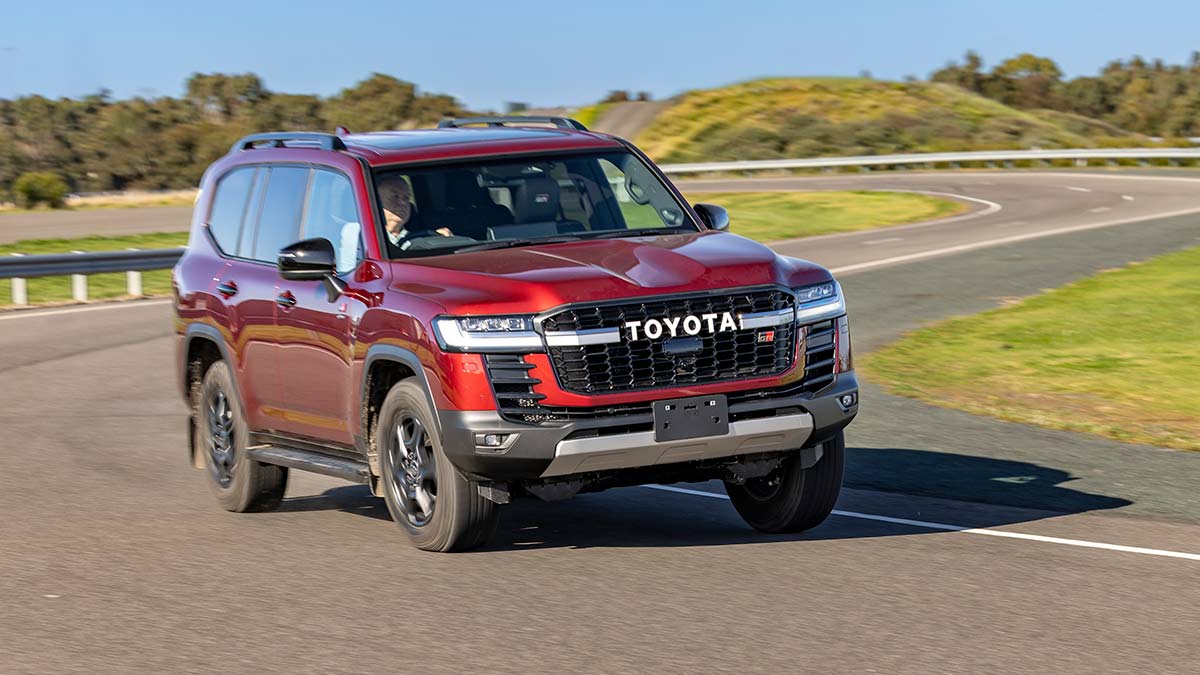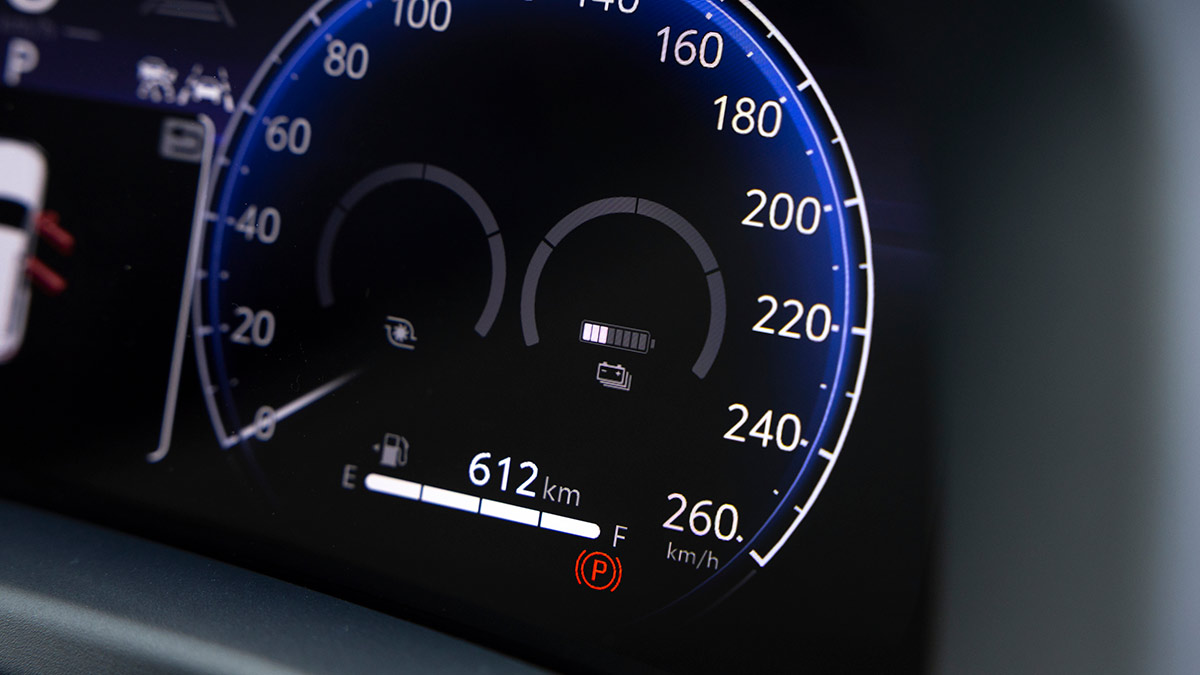Thinking about towing a caravan around Australia? Here’s a guide to the best cars on sale today to tow a caravan or boat.
2026 Toyota LandCruiser Hybrid: price, specs and release date in Australia
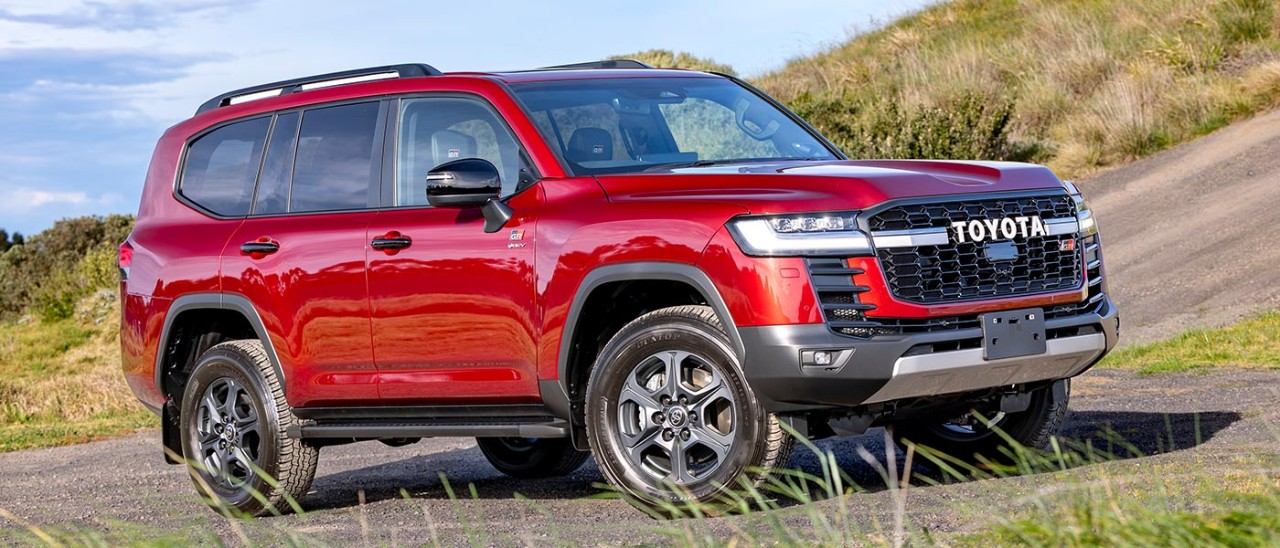
The Toyota LandCruiser Hybrid is launching early in 2026 as a more powerful alternative to diesel. From pricing and performance to payload and towing, here’s what you need to know about the LandCruiser 300 Series HEV.
The 2026 Toyota LandCruiser Hybrid will arrive in Australia early next year, bringing petrol-electric hybrid power to the flagship 4x4 off-road SUV for the first time.
Providing an alternative to the current 3.3-litre twin-turbo diesel V6 with the same six-cylinder turbo-petrol hybrid powertrain as the one already used in the Toyota Tundra full-size pick-up truck, Toyota promises the LandCruiser 300 Series Hybrid will lose nothing in terms of key performance metrics – including towing capacity for Aussies pulling a caravan around the country.
The LandCruiser HEV will still bring a few compromises and won’t offer lower fuel consumption and emissions than the diesel. However, Toyota Australia vice-president of sales, marketing and franchise operations, Sean Hanley, told RACV it was an important step towards a future where diesel will not be a primary fuel source.
Just as the market-leading Japanese brand helped pioneer hybrids with the original 2001 Toyota Prius, to the point where it now sells more hybrid cars than the total volume of any other brand irrespective of fuel type, Toyota is now asking legions of rusted-on diesel-engine loyalists to be open to the idea of this ‘performance’ (as opposed to ‘efficiency’) hybrid powertrain.
On the subject of who has been asking for a hybrid version of the venerable LandCruiser, Hanley told RACV: “No one’s really been asking for it because the current car does everything they want it to do … It’s not up to the customer to have to ask – it’s up to us to provide an alternative that doesn’t compromise. It still drives performance. It does the things they want it to be.”
He adds: “We see this as the future so we’re starting to warm, I guess, the market up to the future. But we’re doing it in a way that doesn’t take away capability – and that’s the key.
“Once people test-drive, once people understand its capability and that it can do the things they want it to do, I think you’ll find that they’ll be very open to the idea of this technology.
“People seem to be het-up on whether diesel will survive. Diesel will be around for decades. I don’t see it stopping anytime soon, but there will be alternatives.”
Let’s take a closer look at what to expect from the 2026 Toyota LandCruiser Hybrid.
More: Search and compare new and used hybrid cars on sale today in Australia
In this article
- When does the 2026 Toyota LandCruiser Hybrid go on sale in Australia?
- How much does the Toyota LandCruiser Hybrid cost?
- Toyota LandCruiser Hybrid design and specification
- What powers the Toyota LandCruiser Hybrid?
- What is the towing capacity and payload of Toyota LandCruiser Hybrid?
- What safety and technology features on the Toyota LandCruiser HEV?
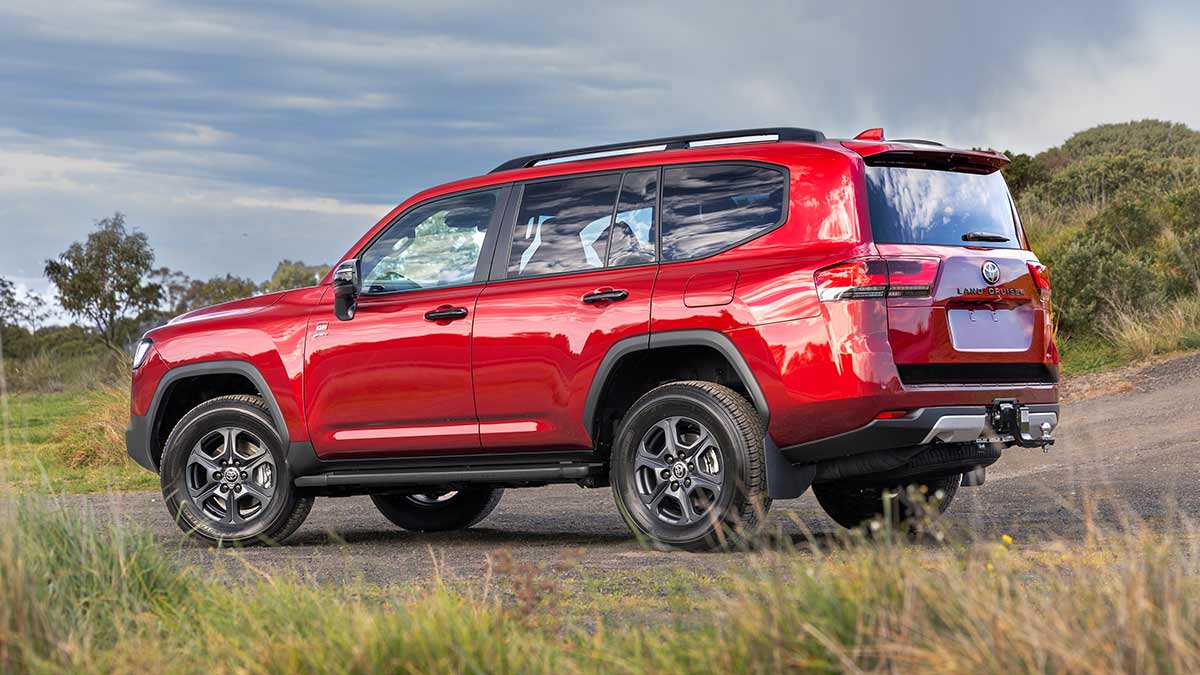
The 2026 Toyota LandCruiser Hybrid GR Sport is one of two model variants at launch.
When does the 2026 Toyota LandCruiser Hybrid go on sale in Australia?
The Toyota LandCruiser Hybrid is scheduled to arrive in Australia in March 2026. Order books are expected to open early next year when full local specifications and pricing are announced prior to first customer deliveries.
The new powertrain will be offered in two premium model grades at launch – Sahara ZX and GR Sport – but Toyota has indicated that the LandCruiser Hybrid should be available in lower-series variants further down the track as production volume and scale increases, depending on the response in the marketplace.
More: Australia’s best large SUVs and 7-seaters
How much does the Toyota LandCruiser Hybrid cost?
Pricing and specs are still to be confirmed for the 2026 Toyota LandCruiser Hybrid in Australia but opting for petrol-electric power over diesel will carry a premium. The company maintains that the hybrid “will still remain in a competitive position” which suggests it should remain close to the $150,000 mark before on-road costs are added – or around $165K driveaway.
The new powertrain will be available at launch in high-grade off-road-oriented GR Sport and comfort-biased Sahara SX model variants, which have similar price points. With a diesel engine, the LandCruiser GR-S is currently priced from $146,160 plus on-road costs ($160,070 driveaway for Victorian private buyers), while the Sahara SX starts at $146,910 plus ORCs ($160,861 driveaway).
“Right now, it (LC300 HEV) is a premium product and it’s aimed up that way,” says Hanley. “There are people who will want that car for the spec and what it provides.”
Both the GR Sport and Sahara SX come highly equipped, but the former has exclusive off-road hardware such as front and rear locking differentials and the e-KDSS electronic sway bar disconnect system. These should all remain on the hybrid version.
The Sahara SX comes with 20-inch alloy wheels (up from 18-inch on the GR Sport), unique styling, an opulent interior fit-out, tailgate kick sensor and a Torsen rear torque-sensing limited-slip differential.
Perhaps the LandCruiser Hybrid’s closest rival will be the related Lexus LX, which has turbocharged diesel and petrol engine options but no hybrid option yet. The diesel LX500d starts from $158,700 and the petrol LX600 opens at $162,200 (both before ORCs).
As with other Toyota hybrids, including Tundra, the LandCruiser HEV will come with a five-year/unlimited-kilometre new vehicle warranty, which can be extended to seven years for the engine, electric motor and driveline. The hybrid’s traction battery warranty can also be extended from five years to a maximum 10, subject to annual ‘health checks’.
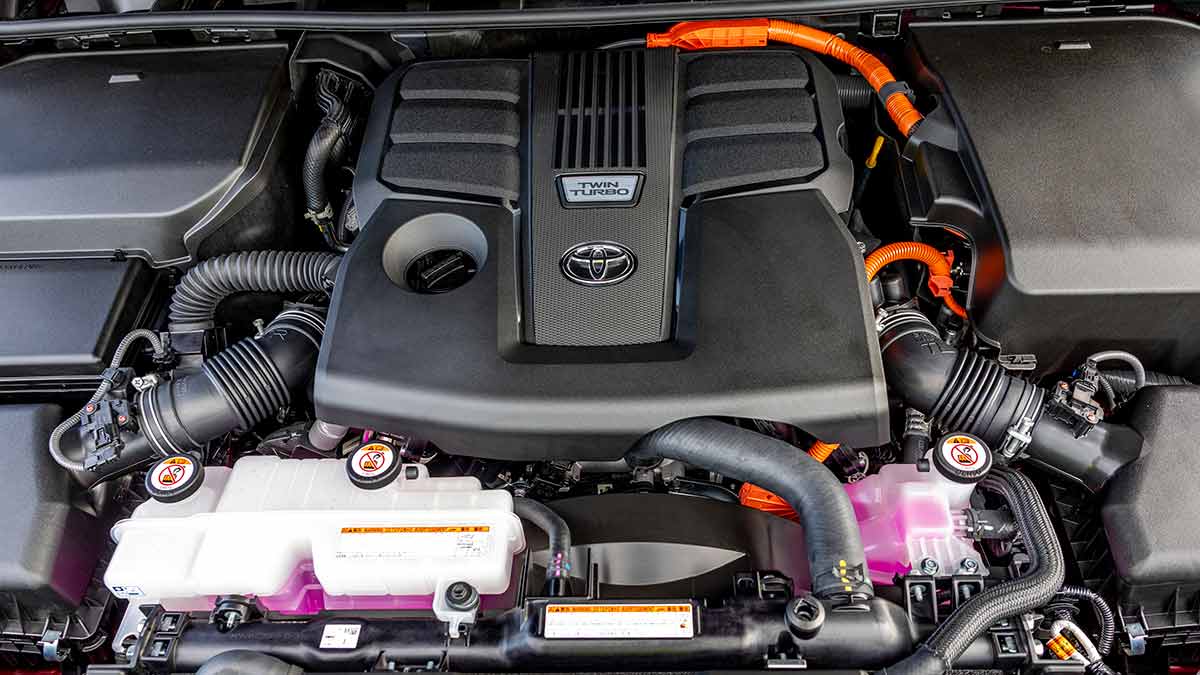
The hybrid powertrain in the Toyota LandCruiser prioritises performance over fuel economy.
Toyota LandCruiser Hybrid design and specification
Toyota Australia participated in the global development of the LandCruiser 300 Series ahead of its launch in 2021 and will conduct final testing of this new HEV version – including off-road and towing performance – in the coming months before customer deliveries begin in the first half of next year.
As per the equivalent diesel engine variants, the 2026 Toyota LandCruiser Hybrid GR Sport and Sahara SX will only seat five occupants, but the addition of the hybrid powertrain and battery should not rule out seven-seat versions in future given overseas markets already offer the LC300 Hybrid with a third row.
That said, the rear-mounted battery and related components do create a higher load floor in the cargo area. The current luggage capacity for five-seater models with the rear seats upright is 1131 litres (to the roofline), extending to 2052L with the second-row backrests folded down. Figures for the LC300 Hybrid are still to come.
The pre-production Australian-spec GR Sport model shown to us included the same wheel-and-tyre combination as the diesel variant – 18-inch with 265/65R18 rubber – and a full-size spare under the vehicle.
Toyota says the hybrid battery area has been specially waterproofed to maintain the LandCruiser’s fording ability. The current wading depth for diesel models is 700mm and we witnessed the LC300 GR Sport Hybrid manage a 600mm water crossing with ease.
The carmaker has also confirmed that if the hybrid unit fails, the vehicle can continue operating solely on the combustion engine, helping ensure peace of mind when travelling in remote areas.
The addition of the hybrid system has led to some minor alterations in the SUV’s dimensions and some body panels, which will become evident when full details are released. The HEV badges on the front doors and tailgate are the most obvious reference points to its hybrid status.
What powers the Toyota LandCruiser Hybrid?
The 2026 Toyota LandCruiser HEV is powered by the same ‘performance’ hybrid powertrain found in the Toyota Tundra full-size pick-up, sandwiching a single electric motor/generator between a 3.4-litre (3445cc) twin-turbo V6 petrol engine and 10-speed torque-converter automatic transmission.
Outputs for the LC300 Hybrid are still to be confirmed, but in the Tundra the combustion engine produces 290kW/649Nm and the e-motor develops 36kW/250Nm. Combined, the system produces 326kW of power and 790Nm of torque. LandCruiser Hybrid versions in the Middle East have a combined 341kW at 5200rpm and 790Nm at 3600rpm, so count on figures close to, if not replicating, these for Australian versions.
The electric motor/generator provides a boost under hard acceleration while also assisting the petrol engine with pulling power when towing or if there’s a heavy load onboard. A clutch connected to the e-motor switches between the two power sources. Energy is recuperated under braking and fed into a rear-mounted nickel-metal hydride battery (1.87kWh in Tundra).
This is a parallel hybrid system whereby the engine and electric motor can operate in tandem or independently, but the latter will only run solo at speeds up to 30km/h. There’s also no EV-only range as found with plug-in hybrid electric vehicles (PHEVs). Power is delivered the wheels via a permanent four-wheel drive system with low-range transfer case.
For comparison, the diesel-powered 3.3-litre (3346cc) twin-turbo V6 in the LandCruiser 300 produces 227kW at 4000rpm and 700Nm from 1600-2600rpm.
Toyota Australia has not yet confirmed the fuel tank capacity of the LandCruiser Hybrid. The diesel engine has a 110-litre capacity – an 80L main tank and 30L sub-tank – but this could be reduced with the hybrid powertrain. In the Middle East, the LC300 HEV tank drops from 110L to just 68L in the GR Sport and 98L in other variants, making a significant impact on its driving range, so we’ll wait to see how the Australian versions stack up.
The Toyota Tundra requires 95 RON premium unleaded in Australia, so the same minimum octane rating is anticipated for LandCruiser HEV. There are no official fuel economy figures yet, but Toyota Australia has told RACV that consumption will be on par with LandCruiser diesel, which is 8.9L/100km on the combined cycle.
“Consumption doesn’t alter, actually, but performance goes up astronomically compared to an ICE engine – with no compromise,” says Hanley. “It has to perform. Remember, what are the keys to these buyer types, the people who want these cars? Performance, quality, durability, reliability, serviceability.”
He adds: “There’s no emissions reduction in a performance hybrid but there is good performance increase.”
What is the towing capacity and payload of Toyota LandCruiser Hybrid?
Toyota Australia has confirmed that the 2026 Toyota LandCruiser Hybrid will match the diesel LC300 with a 3500kg maximum braked towing capacity. This reduces to 750kg without trailer brakes.
As Hanley makes clear, the 3.5-tonne towing capacity was deemed an essential capability demanded by customers in this segment. “The reason we’re launching this car is because there is no compromise on towing,” he states.
Payload capacity is less certain. Asked whether payload was also considered a critical factor and should likewise match equivalent diesel variants, Hanley said: “Not necessarily, but helpful.”
The diesel GR Sport has a 650kg maximum payload and the Sahara ZX can carry 670kg. It’s another detail to watch out for when the LandCruiser HEV is launched.
More: The best cars for towing a caravan
What safety and technology features on the Toyota LandCruiser HEV?
The 2026 Toyota LandCruiser Hybrid is expected to come with the same high level of safety equipment as found in current diesel-powered versions of the full-size SUV, which received a safety and infotainment technology upgrade earlier this year.
All LC300 models have an array of driver assistance systems under the Toyota Safety Sense suite including autonomous emergency braking with pedestrian (day/night) and cyclist (day) detection, active cruise control, lane departure alert, lane trace assist and road sign recognition. The range-topping GR Sport and Sahara SX model variants have adaptive headlights.
A maximum five-star ANCAP safety rating was awarded to the 300 Series in 2022, but this is not expected to automatically apply to hybrid variants without additional testing.
An automatic collision notification system with emergency call (eCall) is fitted across the LandCruiser range under the Toyota Connected Services (TCS) umbrella. With the latest update, TCS functionality was expanded to include remote air-conditioning control and cloud-based connected navigation.
Other tech highlights from the current LandCruiser VX grade onwards include a 12.3-inch digital instrument cluster and a central 12.3-inch central multimedia system touchscreen with wireless Apple CarPlay and Android Auto smartphone mirroring.
There is no specific menu on the centre screen for the hybrid system to show information such as the power split between combustion engine and e-motor, but there is a gauge in the digital instrument cluster for battery charge status.
More: What is eCall and how crash detection technology can save lives
The information provided is general advice only. Before making any decisions please consider your own circumstances and the Product Disclosure Statement and Target Market Determinations. For copies, visit racv.com.au. As distributor, RACV Insurance Services Pty Ltd AFS Licence No. 230039 receives commission for each policy sold or renewed. Product(s) issued by Insurance Manufacturers of Australia Pty Ltd ABN 93 004 208 084 AFS Licence No. 227678.
